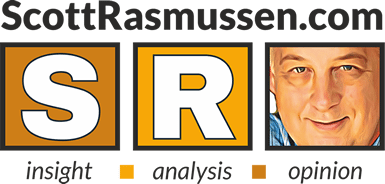Given a choice between four presidential candidates with equal skills and temperament, 31% would prefer a candidate who supported policies like those of President Trump. A Scott Rasmussen national survey found that 24% would like a candidate who supported policies like those of Senator Bernie Sanders; 20% favor a traditional Democrat; and, 15% favor a traditional Republican.
We have been asking this question regularly since last October. Despite the election results and everything that has happened since, these attitudes have remained remarkably stable.
- These numbers show 46% favoring one of the Republican leaning options while 44% prefer a Democratic leaning set of policies. In every update of the survey, the partisan split has remained essentially even. That’s not surprising given that we have had nine consecutive presidential elections where neither candidate has received more than 53% of the vote. It’s the longest such stretch in American history.
- On the Republican side, the number preferring Trump-like policies is consistently two to three times as large as the number favoring traditional GOP policies. However, younger GOP-leaning voters are more evenly divided.
- On the other hand, the two wings of the Democratic party are always just about evenly divided.
- Urban voters strongly support one of the Democratic options. Those in the suburbs lean towards one of the GOP options while rural voters prefer the GOP.
- Those favoring populist policies (Trump or Sanders) consistently outnumber those favoring more traditional policies. This week, the numbers show 55% favoring populist policies while 35% prefer a more traditional approach.
SIGN UP to receive Scott’s free email newsletter.
CHECK OUT Scott’s latest polls.
Note: Neither Scott Rasmussen, ScottRasmussen.com, nor RMG Research, Inc. have any affiliation with Rasmussen Reports. While Scott Rasmussen founded that firm, he left more than seven years ago and has had no involvement since that time.
Methodology
The survey of 1,200 Registered Voters was conducted by Scott Rasmussen using a mixed mode approach from April 15-17, 2021. Field work for the survey was conducted by RMG Research, Inc. Most respondents were contacted online or via text while 261 were contacted using automated phone polling techniques. Online respondents were selected from a list of Registered Voters and through a process of Random Digital Engagement. Certain quotas were applied, and the sample was lightly weighted by geography, gender, age, race, education, internet usage, and political party to reasonably reflect the nation’s population of Registered Voters. Other variables were reviewed to ensure that the final sample is representative of that population.


